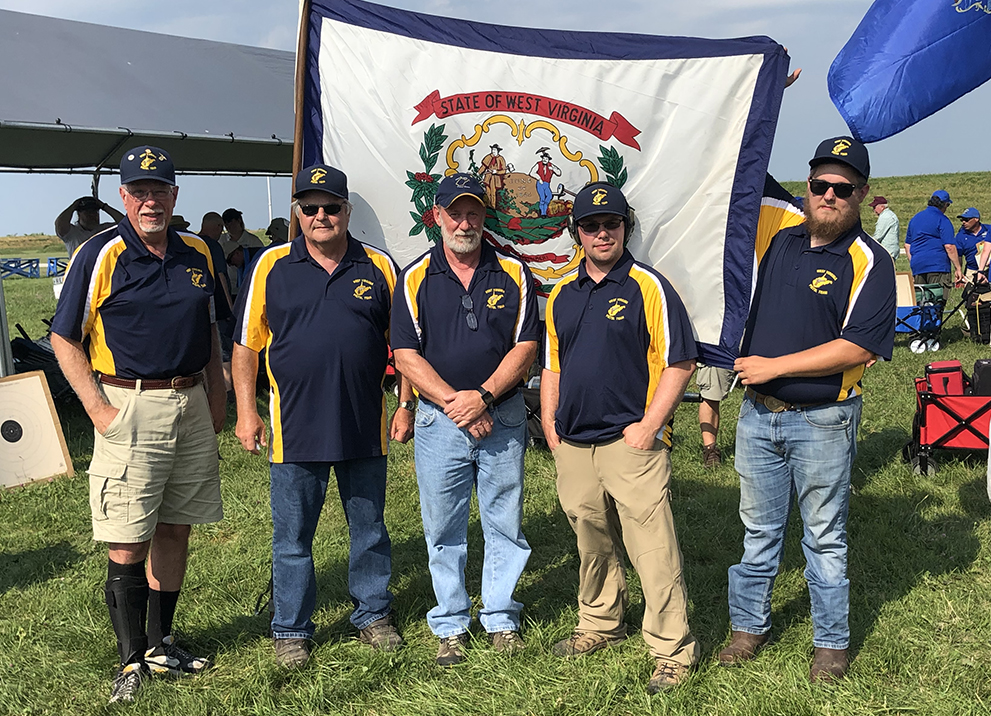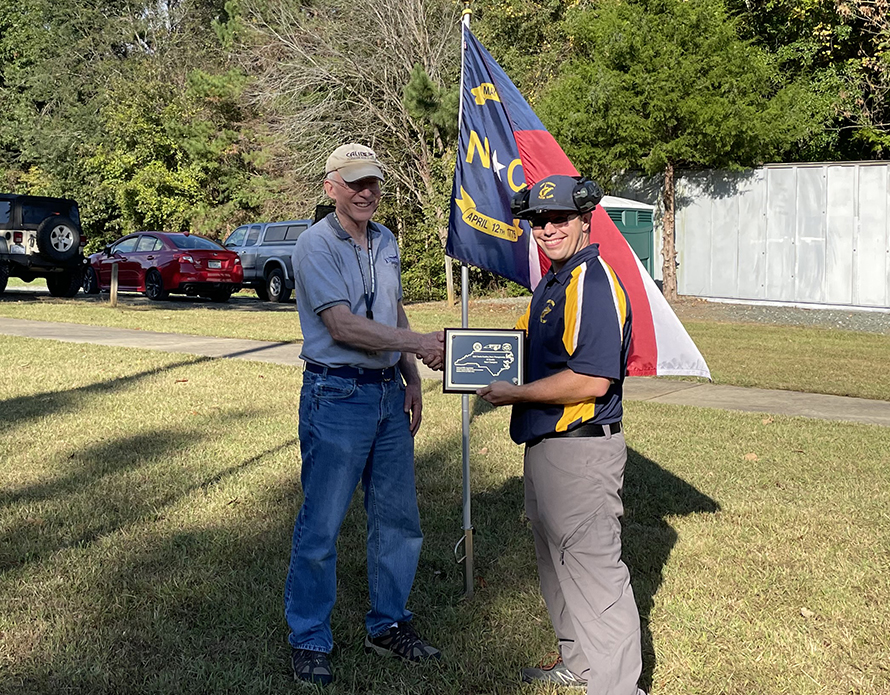West Virginia’s Nate Gunn Earns Distinguished Pistol Badge #1700
January 5, 2022
Civilian Marksmanship Program▸State Director▸West Virginia▸West Virginia’s Nate Gunn Earns Distinguished Pistol Badge #1700“Seasoned competitors perennially give this advice, which I – like many newcomers – ignored when starting out: Train for and shoot every match with your service pistol until you get that badge.”
Nate Gunn, 38, of Spencer, West Virginia, recently earned Distinguished Pistol Badge #1700 after just over two and a half years of competing. It was an ambition that he had his eyes on from the start of his marksmanship career and one that he trained extensively to achieve.
“My Distinguished Badge ticks off a bucket list item,” he said of earning the honor.
Distinguished Badges are the highest individual awards authorized by the U. S. Government for excellence in marksmanship competition. Badges are awarded by the Civilian Marksmanship Program (CMP) after an individual receives enough Excellence-In-Competition (EIC) points at qualifying matches.

Gunn (an appropriate last name for his hobby) currently runs the bullseye pistol program at the nearby Roane County Gun Club in West Virginia and is also a member of two other clubs in the state, including the West Virginia State Rifle and Pistol Association. His marksmanship beginnings are rooted on an old farm where he grew up and practiced target shooting and hunted with his grandfather, but it wasn’t until adulthood that he became involved with formal competition.
“I enjoy that [the sport] is a microcosm – adopting small consistent changes and a good attitude improves scores,” he said. “Adopting them also improves one’s life.”
After his first fun league experience at a local club, he became curious about competitive shooting and how far he could go in the sport.
“My first match was a blast,” Gunn said. “I met a seasoned competitor who lives nearby and pestered him with questions incessantly. He turned out to be very patient and an excellent mentor.”
In 2019, he traveled with the West Virginia State Rifle and Pistol Association team to his first CMP National Matches at Camp Perry – the World Series of Shooting Sports that has attracted thousands of guests to the shore of Lake Erie annually since 1907. There, Gunn competed in service pistol events and took the famous Small Arms Firing School to learn more about the inner workings of the discipline.
“I wanted the full experience,” he said.
Admittedly, he underestimated the National Matches. It was a new experience for him to compete in a major competition setting, and he was ill-prepared under pressure with his iron sights.
“The results were humbling,” he said. “But knowing that I could have done better motivated me.”
He returned home, exhausted from the long drive but fresh with a mindset to improve himself for the following year’s National Matches.
“I dry fired that night, thinking of earning points there before allowing myself to go to bed,” he said. “I was thoroughly hooked after that.”

Unfortunately, the 2020 National Matches were cancelled, but Gunn was able to return to Camp Perry in the summer of 2021. There, he earned 20 Service Pistol EIC points, which left him with just four to go in order to reach the necessary 30 for a pistol badge. He kept up his game to claim six more at a West Virginia state match in September – netting the final points needed to accomplish his objective.
“I was elated,” he said. “Quite a bit of work came together.”
To stay sharp in his skills, Gunn live-fire trains two to three times a week with his Springfield Armory Range Officer Target .45 ACP pistol (with a Nelson Conversion for .22) – working on improving a specific facet of the shot. He also dry fires and competes in air pistol during the winter. He even completes sections from a U.S. Marine Corps Pistol Team Workbook to help him stay on track with his progress.
Gunn realized remaining mindful on improvement came much more quickly when treating service pistol like a bonus match at the end of a grueling 2700 aggregate competition. He said he’s also found success by occasionally practicing with factory 230gr hardball ammo to help diagnose grip issues.
“For me, the greatest challenge was learning how to shake off a malfunction, poor shot or even a distracting good one and stay in my shot process,” he explained. “That helped me gain consistency and better handle on larger matches.”
Outside of earning the goal he had set out to complete, the journey to reach a Distinguished Badge provided even more for Gunn along the way.
“For me, chasing points towards a Distinguished Badge meant travel – meeting the volunteers who make matches possible is a reward on its own.”
About the Distinguished Badge Program:
The Distinguished Rifleman Badge and the Distinguished Pistol Shot Badge were created by the War Department in 1884 and 1891, respectively, to recognize and reward members of the US Army for Excellence-In-Competition (EIC) with the service rifle and service pistol. Other Services of the Armed Forces adopted a similar program about the same time, and in 1926, civilians were authorized to participate in the program. Currently, the CMP administers Distinguished Badges for:
- Service Rifle
- Service Pistol
- .22 Rimfire Pistol
- Junior Air Rifle
- International Shooter
- Smallbore Rifle
- Distinguished Marksman Badge (which allows competitors with a permanent disability or impairment that requires the use of adaptive firing to become eligible to earn EIC credit points)
- Distinguished Air Rifle and Air Pistol
- Distinguished Service Revolver Badge
Learn more about the Distinguished Badge program by visiting the CMP website at https://thecmp.org/competitions/distinguishedbadges/.